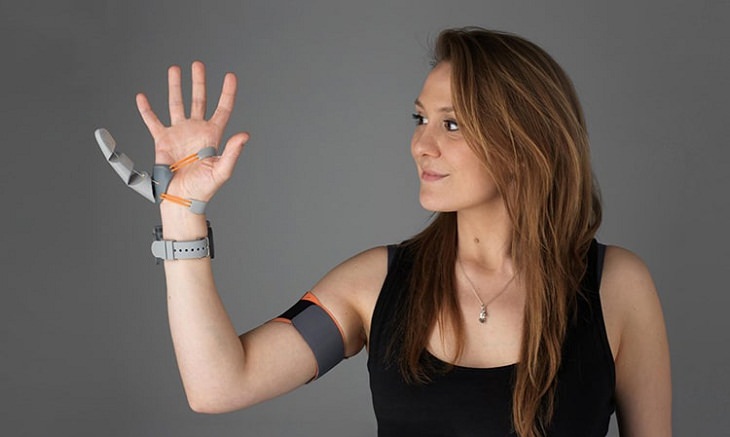

Dani and her team gave 36 participants, all right-handed, the prosthetic thumb and studied them using the device in a five-day training period. During the training sessions, the participants were given a series of reaching, grasping, and manipulation tasks like picking up multiple balls or wine glasses with one hand.


Clode says that she designed the Third Thumb as a project “seeking to reframe the way we view prosthetics, from replacing a lost function, to an extension of the human body.” The study she and her team undertook shows the usefulness of motor augmentation and that with proper training, humans can indeed use such augmented devices judiciously.
The researchers aren’t just excited with the fact that the volunteers were able to perform complex tasks using their device; what's particularly pleasing to them is that they managed to move the thumb even when distracted or blindfolded. Furthermore, the test subjects reported a strong sense of embodiment while wearing the augmentation device.
Of course, they will need to test a larger group of human subjects for a longer period to prove the device’s true capability. But the initial results do show promise. In fact, neuroscientists have been surprised at how quickly participants adapted to the thumb.
Remember that evolution hasn't equipped us to use an extra body part. The prospect of working in conjunction with something that’s physically attached to our body is therefore interesting. Perhaps long-term use of such devices can lead to a change in the brain's representation of the fingers where it may see less of a difference between them with time.
This is something that needs to be explored further and more advanced robotics and prosthetics like the Third Thumb can help achieve that.
Related: 5 Medical Advances That May Alter the Future of Healthcare
Body augmentation can be useful in more ways than just stirring a cup of coffee. It can help a surgeon perform their task without an assistant. It can even enable factory workers to work more effectively. More importantly, it can help people who can only use one hand to perform all the tasks with that very hand. To get there, however, more research would be needed to determine how these devices interact with the human brain.